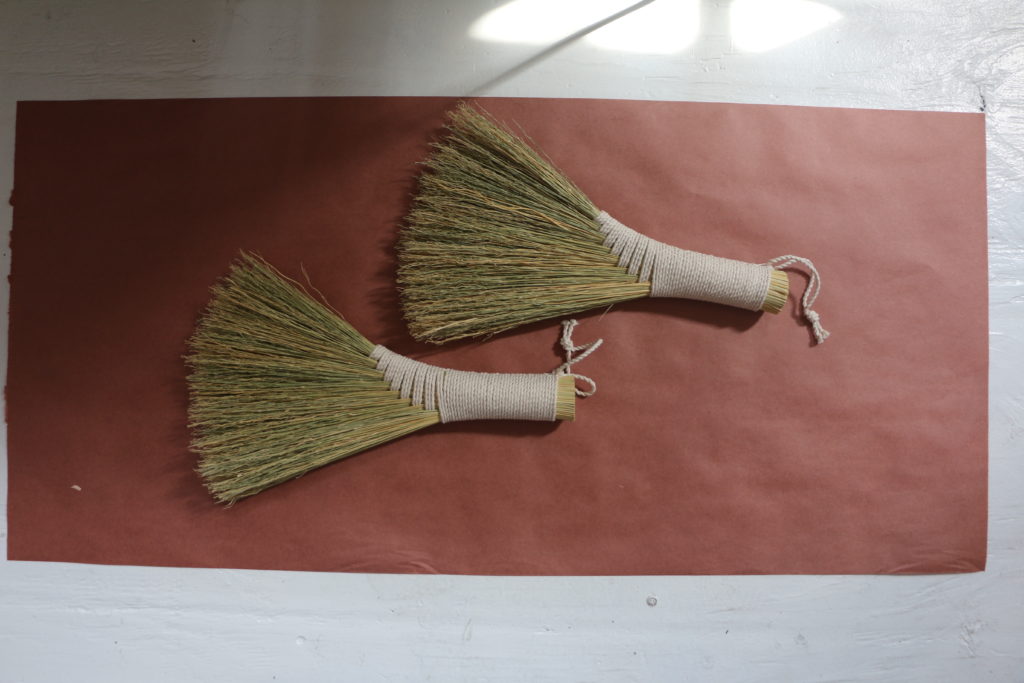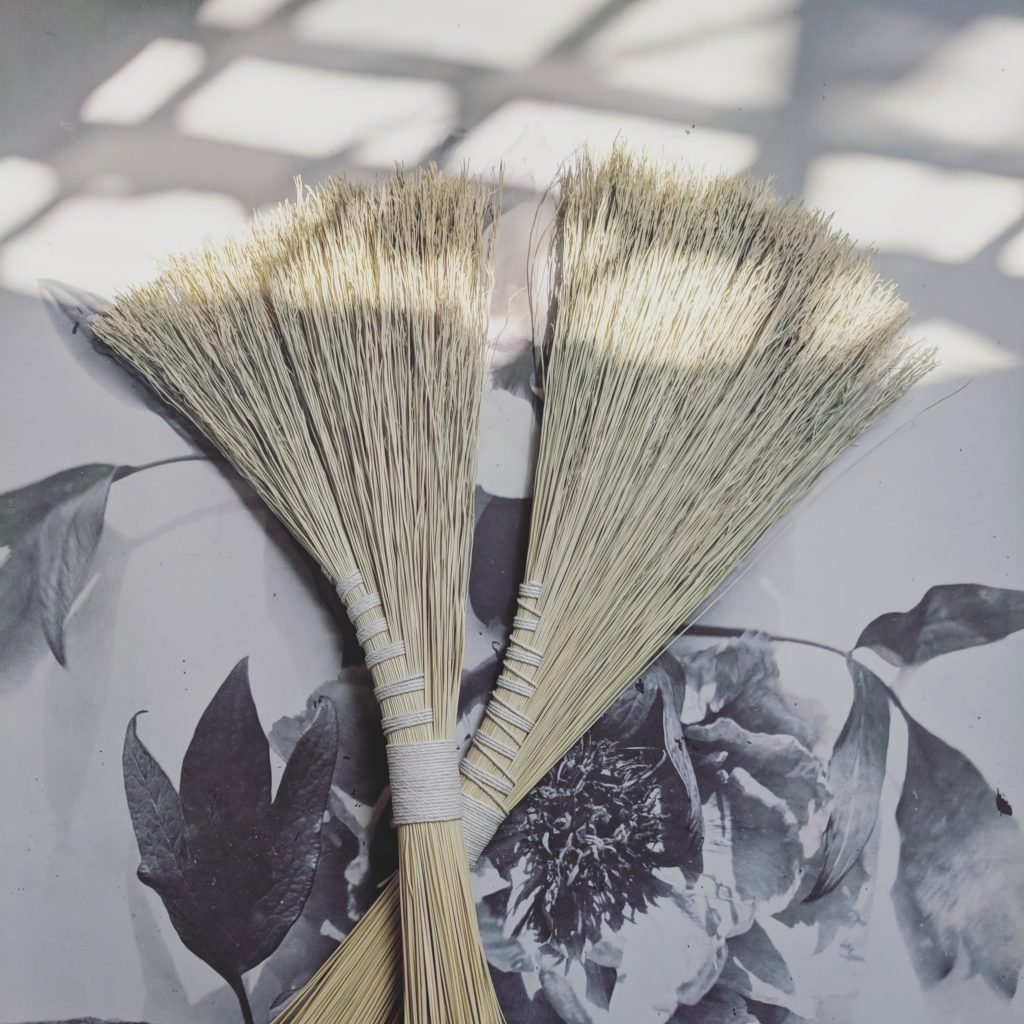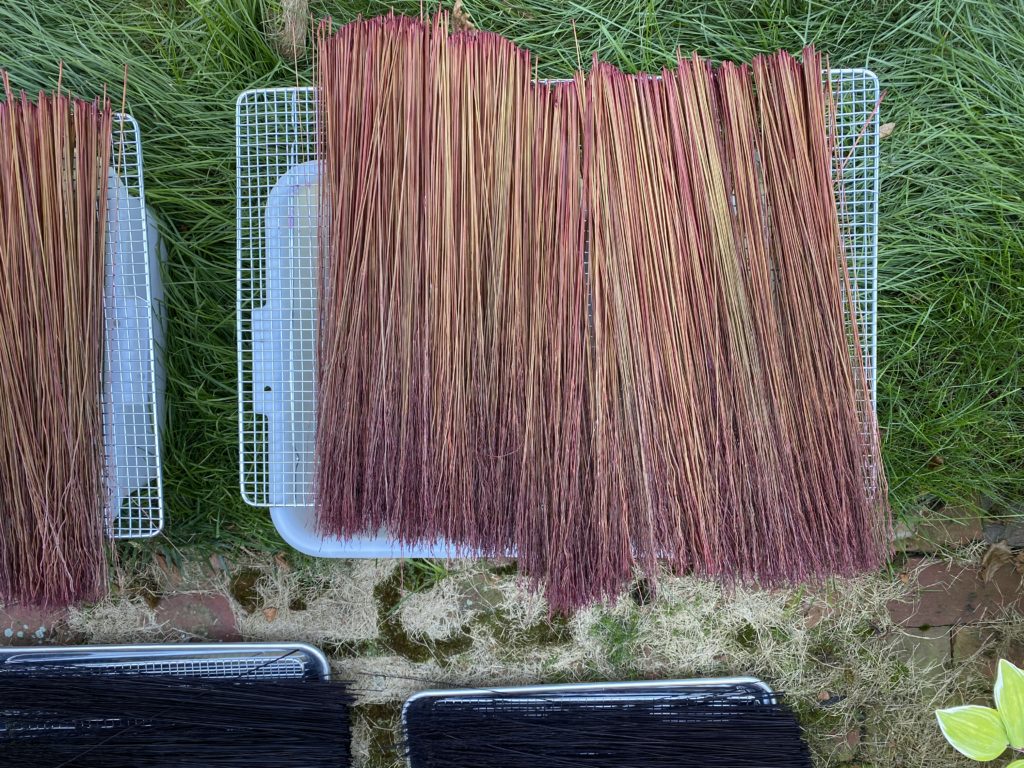WIP Artist Highlight: Erin Rouse
Sahana: Hi Erin! Can you tell me a little bit about yourself and your practice?
Erin: Hi! For the past 8 years, the main part of my practice has been making brooms. My practices vary: I have a background in Painting and Sculpture, I’ve worked a lot with fibers in general, and I’ve also done a lot of natural dyeing. My work with fibers has predominantly been in sewing and weaving.

S: Can you tell me more about the transitions in your practice?
E: Yeah, my practice started with a studio-art focus, and shifted deep into craft. I think I’ve made over 1000 brooms at this point. I was drawn to the utilitarian aspect of craft, which is how I got into making brooms. It’s a rich tradition that crosses so many different time periods, materials, and cultures. Right now, I’m working on plaited and woven ornaments that use the same material as the brooms but refer to a different history.
S: Speaking of history as well, can you tell me about the references you are drawn to?
E: I recently started looking into British corn dollies, which are woven and braided decorative straw sculptures. These dollies were made as a harvest custom at the end of season to ensure a good crop for the next season. There is a sense of magic, of offering, and an emphasis of social functions with the making of the dolly. But the history and geography of straw work is vast, from Medieval England, Scandinavia, the Mediterranean, Northern Africa, Japan, and Central and South America.
S: What dynamic do you find between your work with the brooms and the work you are doing with these sculptures?
E: The brooms I make are very rooted in the Shaker style of broom making; the machine I use is one from the late 1800s. I use old square nails and wire, and they’re very much historically influenced. But the objects I’m making now are playful, with a broad mix of references. There is a dynamic between the functionality and decoration, but the materiality remains as a constant for both.

S: Can you tell me more about the materiality of the brooms as well?
E: I definitely go through quite a bit sifting and sorting the straw to make sure all the pieces of broomcorn are cooperative for the process, so that’s a constant. I also dye the straw, and figuring out the dye recipe has been a part of the material process, because it isn’t the same as working with fabric. There’s a constant reference to history with the dye processes, because the dyestuffs and recipes are sometimes hundreds of years old.
S: With the particularity of the brooms that you make, how does that shape the techniques you explore in your practice?
E: I think repetition is a very big part of honing the craft, as well as getting to know the material inside and out. I wouldn’t say my process is mechanical, but rather automatic, in terms of how the repetition works its way in. I find that creating something for functionality and creating something for beauty have different ways of going about them.
S: How do you approach making something beautiful, then?
E: I feel like that’s where I go back to my books and look at the objects that are pure ornament. Objects from the Neoclassical period are also something that I go to when making something beautiful, because the emphasis on decoration is potent.
S: I’m also curious about the timelines you operate in, could you tell me more about that?
E: My practice revolves around making work that someone might have done 1000 years ago, but with the benefit of all the more ideas and techniques that have developed all over the world. In the grand scheme of things, it also comes down to connecting with people and traditions that go beyond our lifetimes, so I find that to be a big part of my practice. It’s fun to jump back in time and think about the communal aspect of making.

S: And how would that timeline tap into what you are currently working on at this residency?
E: I’m currently working on wall ornaments that are referencing Neoclassical ornaments from Scandinavia. I was looking at this faux-finishing book filled with Swedish painting techniques and a lot of trompe l’œil and I found it to be exciting, subversive even, to make something so decorative out of straw. The work is also in conversation with Victorian mourning hair art. I’m using plaiting techniques that are typically used with hollow straw, and then bending and molding them in various ways.
S: With that, what are you looking forward to with your practice?
E: I think moving forward with all of this braiding and seeing how it all goes. I also can’t wait to get back into weaving; I recently took a Double Weave class. I always find that all the different textile techniques overlap with each other at the end of the day, so it always goes back to seeing where those intersections take me.